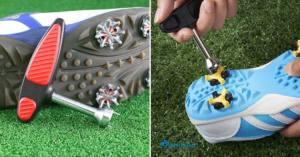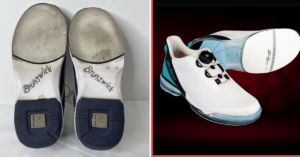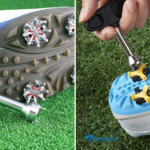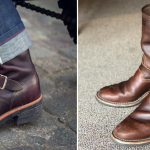Finding a watch that fits just right can be a game-changer for your style and comfort. Whether you’re a watch enthusiast, a fashionista keen on accessorizing, or shopping for the perfect gift, understanding how to measure your wrist for a watch is crucial. This guide will walk you through the importance of wrist size, the tools needed, and step-by-step methods to ensure a perfect fit every time. By the end of this post, you’ll be equipped with all the knowledge you need to make confident watch choices.
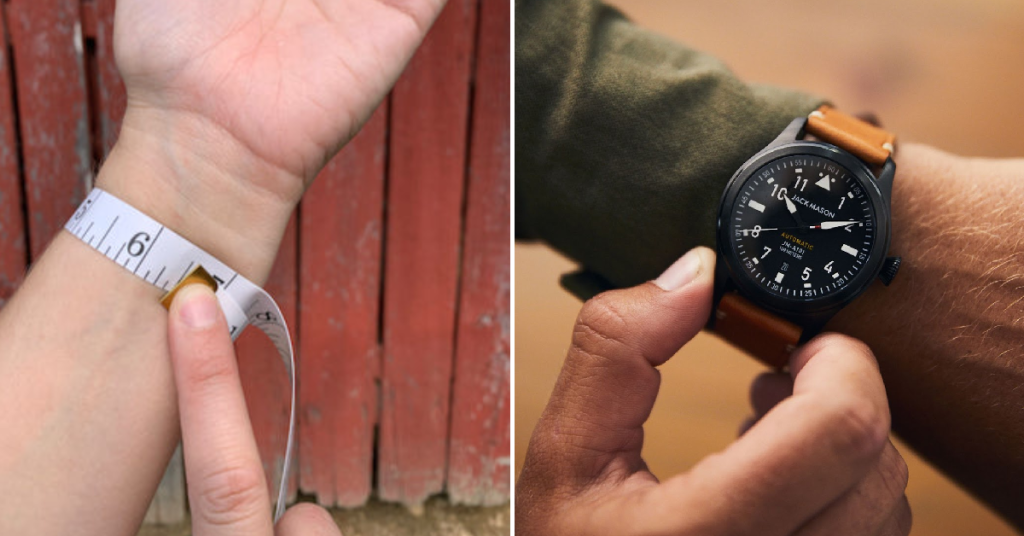
The Importance of Wrist Size
Having a well-fitted watch does more than just tell time—it enhances your overall appearance and comfort. An ill-fitting watch can either look too bulky or be annoyingly loose, both of which are far from ideal.
Firstly, a correctly sized watch is essential for comfort. A watch that’s too tight can restrict blood flow, leaving unsightly marks and causing discomfort. Conversely, a too-loose watch can slide around, disrupting your daily activities.
Secondly, aesthetics play a significant role. Watches should complement your wrist rather than overpower it. Understanding your wrist size ensures that your timepiece looks proportionate and stylish, making it an accessory you can flaunt confidently.
Tools Needed for Measuring Your Wrist
Before you start measuring, gather the necessary tools to make the process seamless. The good news is, you don’t need anything fancy. Here’s a list of simple tools you’ll need:
- Flexible measuring tape: A soft tape measure used for sewing
- String and ruler (as an alternative): A piece of string and a standard ruler
- Pen and paper: To jot down measurements and notes
These tools are likely already lying around your home or can be easily acquired from a local store.
Step-by-Step Guide to Measuring Your Wrist
Measuring your wrist might seem daunting, but it’s actually a straightforward process. Follow these steps to get an accurate measurement:
- Relax Your Wrist: Keep your wrist relaxed, allowing it to settle into a natural position to avoid any tension that might affect your measurement. Make sure to measure your non-dominant hand for accuracy, as this hand tends to be slightly smaller and less muscular. For the best results, ensure your hand is open and fingers are slightly spread, maintaining a neutral position throughout the process.
- Place the Tape Measure: Wrap the flexible tape measure around your wrist just below the wrist bone. Ensure it’s snug but not too tight. Hold the tape in place and take note of the measurement in inches or centimeters. Double-check the fit to make sure it’s comfortable, as this will help ensure accuracy. If possible, have someone assist you to keep the tape level and straight for an even more precise reading.
- Record the Measurement: Carefully write down the measurement where the tape meets the zero point. Ensure the tape is straight and not twisted for an accurate reading. If possible, have someone assist you to hold the tape steady. Repeat the process a few times to confirm consistency and accuracy. Double-check your recorded figures to avoid any errors before proceeding to the next step.
This method ensures you get a precise measurement, setting the stage for a watch that fits perfectly.
Measuring with a Tape Measure
The simplest and most precise way to measure your wrist is by using a flexible tape measure. Here’s how to use this tool effectively:
- Wrap the Tape Around Your Wrist: Hold one end of the tape at the point just below your wrist bone. Wrap it around until it overlaps. Make sure the tape is snug but not too tight, allowing for comfortable movement. Ensure the tape is flat against your skin without any twists or folds for an accurate measurement. If needed, adjust the position for a more precise fit.
- Ensure a Snug Fit: Make sure the tape is laying flat against your skin but isn’t digging in. It should feel comfortable and secure, allowing you to move freely without causing any irritation or discomfort. Double-check that the edges are smooth and there are no air bubbles or folds that could affect its effectiveness. Remember, the right fit ensures optimal support and performance.
- Read and Note the Measurement: Carefully observe where the tape meets the zero mark on the measuring tape; this indicates your wrist size. It’s important to ensure the tape is snug, but not too tight, to get an accurate measurement. Once you have the measurement, write this number down for future reference. This will help you when selecting wristbands, bracelets, or watches to ensure a perfect fit.
This method provides a direct and accurate way to determine your wrist size, helping you avoid any guesswork.
Alternative Methods for Measuring Your Wrist
If you don’t have a flexible tape measure on hand, don’t worry! There are alternative methods you can use:
- String and Ruler: Wrap a piece of string around your wrist and mark where it overlaps. Lay the string flat and measure its length with a ruler.
- Printable Measuring Tape: Some websites offer printable measuring tapes. Print one out, cut it to size, and use it like a regular tape measure.
- Paper Strip: Cut a strip of paper, wrap it around your wrist, and mark the overlap. Measure the length with a ruler.
These methods are just as effective and provide flexibility if traditional tools aren’t available.
Determining the Right Watch Size Based on Your Measurement
Once you have your wrist measurement, determining the right watch size becomes easier. The watch case diameter is key here. Here’s a guideline to help:
- Wrist size of 6 inches or smaller: Opt for a case diameter of 38mm or less for a balanced look.
- Wrist size between 6-7 inches: A case diameter of 38mm to 42mm works well, offering a moderate and stylish appearance.
- Wrist size of 7 inches or larger: Choose a case diameter of 42mm or more to ensure the watch doesn’t appear too small.
Matching your wrist size to the appropriate case diameter ensures your watch complements rather than overwhelms your wrist.
Adjusting for Different Watch Styles
Different watch styles may require slight adjustments to your measurement for the best fit. Here’s how to account for various styles:
- Dress Watches: Typically thinner and smaller in diameter, dress watches are designed to complement formal attire. These timepieces often feature minimalist designs, enabling them to easily slide under a dress shirt cuff. Consider selecting a watch slightly smaller than your usual preference for a more refined and elegant appearance. Opt for classic materials like leather straps or metal bracelets, and look for simple dials with understated markers or Roman numerals. A dress watch should be versatile enough to wear on various formal occasions, adding a touch of sophistication to your ensemble.
- Sport Watches: Often larger and bulkier, sport watches are designed to withstand rigorous activities and provide features like timers, heart rate monitors, and GPS. Their robust construction makes them ideal for outdoor adventures and athletic pursuits. Opt for a snugger fit to prevent the watch from sliding around during activities, ensuring accurate readings and a comfortable experience. Moreover, many sport watches come with interchangeable straps, allowing users to customize their look and adapt to different environments.
- Smartwatches: These can vary greatly in size, from sleek and minimalist designs to more robust and feature-packed models. Ensure the band offers enough flexibility to adjust according to your comfort, as a good fit is crucial for accurate tracking of health metrics and ease of use throughout the day. Consider the smartwatch’s compatibility with your smartphone, battery life, and the range of available apps and features like GPS, heart rate monitoring, and notifications, to ensure it meets your lifestyle needs.
Understanding these nuances helps you make informed choices regardless of the watch style you’re considering.
Tips and Tricks for a Perfect Fit
Achieving the perfect watch fit involves more than just the right size. Here are some tips to ensure optimal comfort and style:
Consider the Band Material: Metal bands might require links to be added or removed, while leather or fabric bands can offer more immediate flexibility.
Utilize Micro-Adjustments: Some watches come with micro-adjustments on the clasp for fine-tuning. Use these to get a fit that feels just right.
Seasonal Adjustments: Your wrist size can fluctuate with temperature changes. Loosen the band slightly in summer and tighten it in winter for consistent comfort.
These practical tips help you maintain a comfortable and stylish fit year-round.
FAQs about Measuring Your Wrist for a Watch
Why is it important to measure my wrist for a watch?
Measuring your wrist ensures that you select a watch that fits comfortably and looks proportionate. An ill-fitting watch can be uncomfortable and may not sit correctly on your wrist.
What tools do I need to measure my wrist?
You can use a flexible measuring tape, a piece of string, or a strip of paper. If you use string or paper, you’ll need a ruler to measure its length afterward.
How do I measure my wrist size?
To measure your wrist, wrap the measuring tape around your wrist just above the bone. If you’re using string or paper, wrap it around your wrist, mark where it overlaps, and then measure the length with a ruler.
What should I do if I don’t have a measuring tape?
If you don’t have a measuring tape, you can use a piece of string or a strip of paper. Wrap it around your wrist, mark the point where it overlaps, and then measure it against a ruler.
Should I measure my wrist tightly or loosely?
Measure your wrist snugly but not too tight. You want to find a comfortable fit that allows for some movement without being constrictive.
What is the average wrist size for men and women?
The average wrist size for men typically ranges from 7 to 8 inches, while for women, it usually ranges from 6 to 7 inches. However, individual sizes can vary widely.
How do I choose the right watch size based on my wrist measurement?
Once you have your wrist measurement, refer to the watch manufacturer’s sizing guide. Generally, a watch case diameter of 38-42mm is suitable for average-sized wrists, while larger cases (over 42mm) may be better for larger wrists.
What if my wrist size falls between two sizes?
If your wrist measurement falls between two sizes, consider the style of the watch. For a casual look, you might prefer a looser fit, while a dress watch is often better fitted.
Can I adjust the watch band if it doesn’t fit perfectly?
Most watch bands can be adjusted. Many metal bands have removable links, while leather and silicone bands may have multiple holes for sizing adjustments.
Is it necessary to measure my wrist every time I buy a watch?
Wrist sizes can change due to weight fluctuations, swelling, or other factors. It’s a good idea to measure your wrist each time you purchase a new watch to ensure the best fit.
Are there any specific considerations for smartwatches?
When measuring for smartwatches, consider the added bulk of the device. Ensure that the watch sits comfortably on your wrist, allowing for easy access to the screen and sensors.
Where can I find a sizing guide for specific watch brands?
Most watch manufacturers provide sizing guides on their websites or in-store. It’s always best to refer to these guides for the most accurate fit based on your wrist measurement.
Conclusion
Measuring your wrist for a watch might seem like a small detail, but it makes a world of difference in comfort and style. With the right tools and a bit of know-how, you can ensure that your next watch purchase fits like a glove. Remember, the perfect fit not only enhances your look but also ensures you wear your watch with confidence and ease.
